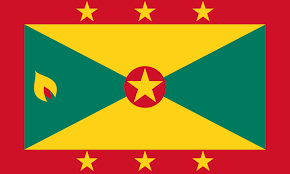Grenada was first inhabited by the Arawaks of India, who were then displaced by the warring Caribbean nations. Christopher Columbus was the first European to discover the island. He arrived in 1498 during his third voyage to the New World. Columbus named the island “Concepción”, but the name stuck and was later called Grenada. The name probably comes from the Spanish city of Granada.
The island was uninhabited for some time after its discovery due to the violent local Caribbean indigenous people. In 1650, Cardinal Richelieu of France bought Grenada from the British and established the first settlement. In 1762, the British recaptured the island from France in the Seven Years’ War. After that, the island became a British colony.
Initially, the island was used to grow sugarcane, but later nutmeg and cocoa were also introduced and soon became staple crops. Grenada remains a major supplier of cocoa and nutmeg.
Grenada gained independence in 1974. It became one of the smallest independent countries in the Western Hemisphere. In October 1983, Grenada was occupied by a group of Marxist communists. Six days later, US forces invaded the islands. Democracy and free elections were restored the following year and continue to this day.
| Capital | Saint George’s |
| Population | 126,281 (Source: 2023 worldometer) |
| Major Cities | SAINT GEORGE’S (capital) |
| Borders | Venezuela and Trinidad and Tobago to the south, and St. Vincent and the Grenadines to the north |
| Gross Domestic Product (GDP) | $1,256,413,185 (2022 worldometer) |
| Currency | East Caribbean dollar (XCD) |

Grenada Major Industries: food and beverages, textiles, light assembly operations, tourism, construction
Grenada Agricultural Products: bananas, cocoa, nutmeg, mace, citrus, avocados, root crops, sugarcane, corn, vegetables
Grenada Natural Resources: timber, tropical fruit, deepwater harbors
Grenada Major Exports: bananas, cocoa, nutmeg, fruit and vegetables, clothing, mace
Grenada Major Imports: food, manufactured goods, machinery, chemicals, fuel
Total Size of Grenada: 344 km² (source: 2022 The world factbook)
Geographical Low Point of Grenada: Caribbean Sea 0 m
Geographical High Point of Grenada: Mount Saint Catherine 840 m
Climate of Grenada: Tropical; tempered by northeast trade winds
General Terrain of Grenada: volcanic in origin with central mountains
World Region or Continent of Grenada: Central America
Geographical Coordinates: 12 07 N, 61 40 W
Grenada Government Type: parliamentary democracy
Grenada Nationality: Grenadian(s)
Grenada National Holiday: Independence Day, 7 February (1974)
Grenada Independence: 7 February 1974 (from UK)
Grenada National Symbol:
Grenada National Anthem or Song: Hail Grenada
Grenada Languages Spoken: English (official), French patois
Grenada Religions: Roman Catholic 53%, Anglican 13.8%, other Protestant 33.2%
More than 90 percent of her homes in Grenada were damaged or destroyed by Hurricane Herr Ivan in September 2004. This incident was a disaster for the island nation.
Grenada was part of the Commonwealth of the West Indies from 1958 to 1962.
After France, England ruled the island. The British recognized the island’s potential and campaigned to develop the sugar plantations there. Grenada is known as the ‘Spice Island’ because nutmeg, mace and other spices are grown there.
Grenada has Jumpers Hill. The hill got its name when the Caribbeans (the first inhabitants of Grenada) were driven out by the French who tried to take control of the island. The Caribbean reached the top of the hill, but there was no way to escape. In the end they jumped off a hill and died
Origin of the name: The name Grenada probably comes from the Spanish city of Granada, which means “pomegranate”.
This island he named “Concepcion” by Christopher Columbus in 1498. The endangered Grenada pigeon is the national bird of Grenada.
The island nation of Grenada consists of the main body of Grenada and her six other islands.
She has experienced only three hurricanes in the last 50 years, even though Grenada is located at the southern tip of the Grenadines, where hurricanes usually pass.
Can you believe this island nation’s national dish is called ‘oil down’? The meal is simmered in coconut milk until fully absorbed.
The people of Grenada are called Grenadiers. People in Grenada are also affected by the Zika virus. In May 2016, new cases of infected people surfaced in Grenada.
Grenada is also home to the River Antoine Rum Distillery, the oldest hydro-powered distillery in operation in the Caribbean.
The island remained uninhabited for over a century after Christopher Columbus arrived.
Grenada’s first international airport was built in 1985. A popular breakfast drink on the island is cocoa tea, made with local cocoa and spices.
Greetings are an important part of everyday etiquette in Grenada.

